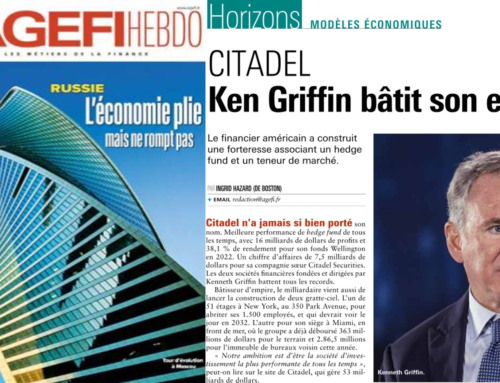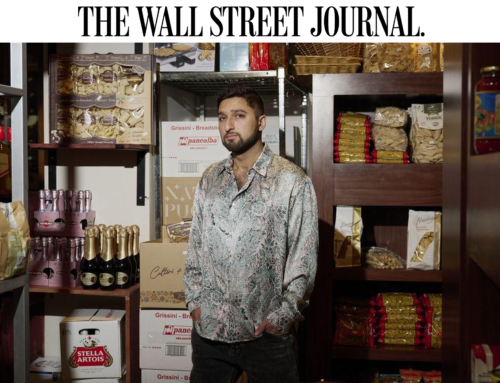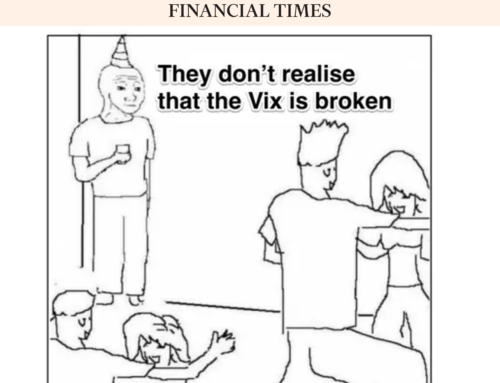Robinhood IPO puts the secretive practice of ‘payment for order flow’ in the spotlight. Here’s how it works
July 29, 2021 7:00 PM CDT
Payment for order flow, also called “PFOF,” is the hyper-complicated, hyper-controversial practice of brokerages like Robinhood or Charles Schwab accepting money (typically fractions of cents) in exchange for client trade orders. Add scale and wild market volatility, and those pennies can add up to hundreds of millions of dollars; this extra pocket change helps brokerages finance zero-commission trades. In the first quarter of 2021, Robinhood reported net revenue of more than $522 million—81% of which was derived from PFOF and other transaction rebates, according to its IPO filing.
While the practice of PFOF has been under microscope and hot debate for more than three decades, meme stock volatility and evolving brokerage business models have brought the discussion into fresh focus—and raised novel concerns over the practice. PFOF was a hot-button issue in a Senate Congressional hearing over GameStop volatility earlier this year, and financial regulators have said they are taking a closer look at it.
A key aspect of PFOF is that it’s simply difficult to grasp how it works. The companies operating behind the scenes are creating equity and options markets by mobilizing a combination of advanced high-frequency trading technology and some of Wall Street’s most brilliant minds. It’s a lucrative part of the financial sector that is rarely put under the spotlight, and it’s often misunderstood.
“This is a very exciting corner of the ecosystem—a very important one—that is home to the most sophisticated trading firms in the world,” says Paul Rowady, director of research for Alphacution Research Conservatory, where he studies market structure and the business of trading.
How it works
The user experience of brokerage apps these days simplifies trading to a “buy” or “sell” button. But each transaction triggers key players into action. Of course, most of this happens in mere milliseconds via technology and algorithms.
Every trade has two sides: buyer and seller. If Donna wants to buy a single share of Apple (trading at $144.58 as I write this), theoretically there needs to be another investor ready to sell their share to her. Depending on the day and state of the markets, that probably wouldn’t be too hard—an average of 84.2 million shares of Apple stock are traded each day. Take a small, lesser-known company that averages only a mere thousand trades a day in their shares, and it may take a few hours or days to find someone to take the other side of a trade, depending on size and timing.
Enter financial companies, known as “market makers” or “wholesalers” that help add instantaneous liquidity to the marketplace. They come in at the other end of trades, either with matching buyers or sellers, or to take the other end of a trade themselves. They receive millions of trades each day to execute from brokerages in what’s called “order flow.”
What’s in it for them? A lot. Market makers make a profit based on how they can both fill trades and manage their risk, as it’s likely they are going to temporarily lean long or short based on the order flow they receive.
In an ideal world for the equity markets, each “buy” order that comes into a market maker has an identical “sell” to fill it—at the same time. But typically there’s what’s called the bid-ask spread, which is the difference between the highest price a buyer is willing to pay, and the lowest price a seller is willing to dispose of their shares. The wider the bid-ask spread (which typically correlates with supply and demand), the more opportunity there is for market makers to improve the execution price, compared to the regular exchanges, and take their cut.
Realistically, market makers often end up with risk on one side of the market, for a few minutes, hours or even days, based on timing and market size. Their success lies in how they can model out that risk and manage it, according to Rowady. Market makers use real-time stock price data feeds, which they buy from the exchanges, to help them improve their models. They can also leverage other lines of their business, such as trading against futures, options, ETFs or even other asset classes or geographies, Rowady explains.
“Every trade is setting off a cascade of decisions about what to do next,” he says. “It’s like you are playing the very complicated version of Tetris… Take Tetris on steroids, and speed it up faster than the eye can see.”
In exchange for the trading orders, market makers hand over miniscule payments, often called “rebates,” to brokers like Robinhood and Schwab for their investor orders. When you read small, think $.009 or $.0009 cents per share, though it will depend on factors such as the type of order. If those numbers sound irrelevant, fractions of pennies add up.
All brokerages are required under Securities Exchange Commission rules to disclose on a quarterly basis where their investor trades are being executed, how much money they are making from the order flow as well as their order routing policies. This information can be found in disclosure documents called “606 reports” and “607 reports.”
It’s the same group of market making competitors that frequent those disclosures: think Citadel Securities, Virtu Americas and G1 Execution Services, to name a few. There’s a host of smaller players playing in the space, but it’s competitive. “It’s so technology intensive, which is ultimately a very unique human capital problem,” Rowady says, adding that “you need to pay them handsomely.”
Controversy ensues
Payment for order flow is as controversial as it is complicated.
In theory, market makers add liquidity and efficiency to the marketplace, and brokerages get better price tags for their customers. That’s because market makers or brokerages are legally required to price their trades according to the prices offered on the public markets, called the “National Best Bid and Offer,” or the “NBBO.” Investors must get either the same price, or a better one, than if their order had been routed directly to the New York Stock Exchange or Nasdaq. Market makers are being judged by brokerages on the price improvement they can offer their customers, so they have an incentive to be highly competitive. Brokerages boast on their websites that investors are getting better prices than the exchanges: to the tune of hundreds of millions of dollars in savings each quarter. Just to be clear, the practice of PFOF is also in line with financial market rules.
So what’s the problem? The answer (including whether there is any kind of problem) largely depends on who you ask.
The standard argument against PFOF is one of conflicts of interest and secret pricing.
What investors may not realize is that many trades often don’t hit a traditional exchange at all. Particularly during the pandemic, when retail investors have flocked into the markets to trade for free, levels of off-exchange activity spiked. On some days this year, 50% of trading activity was happening off the exchanges at market makers or brokerages—a sizable bump from typical levels.
If half of the trading activity is happening off exchanges, or “in the dark,” then market prices aren’t reflecting a significant chunk of trading data. That raises questions over whether the NBBO is still an adequate price gauge. “If you’re selling your house, you’d want to show it to as many people as possible, not just one or two,” Justin Schack, partner at Rosenblatt Securities in New York, told Bloomberg earlier this year.
Longstanding critics of PFOF say that market makers have an incentive to keep the spread as wide as possible. “The market maker is providing the best legal price, but not the best possible price,” Doug Atkin, the former CEO of electronic communications network Instinet, told Fortune in March.
This idea is controversial, as many argue that market makers actually help tighten the spread between the bid and ask price, and ultimately reduce trading costs for investors. In 2014, the chief executive of Vanguard (a low-fee advocate which routes orders to wholesale traders, but doesn’t take PFOF) came to the defense of market makers and how they had effectively reduced the bid-ask spread to lower levels. This was shortly after Michael Lewis’ book Flash Boys threw the industry into a debate over market structure and payment for order flow.
For PFOF critics, it usually boils down to conflict of interest. Brokerages that rely heavily on transaction-based revenue have an incentive to route trades to market makers over traditional exchanges—whether the pricing is better for an investor or not. That’s why the SEC demands rigorous disclosures about their order flow. At the same time, it’s what is making zero-commission possible in many cases.
Do retail investors care either way? After all, it is typically just a matter of a few cents. For someone that plans to hold a position for more than a year, “a penny, or even five cents doesn’t make all that much difference,” Rowady says, “especially if you’re not paying commissions.”
Either way, some financial companies think it’s worthwhile to remove conflicts from their business models. Brokerages like Fidelity and Vanguard don’t accept PFOF, and they say they’re able to secure better prices for the end investor because of it. Some smaller players have followed their lead. Shortly after the meme stock frenzy at the end of January, retail brokerage Public.com made a decision to stop accepting PFOF and start routing its orders directly to the exchanges. It said it would lean into other lines of revenue to make the numbers work.
Regulatory status
Financial regulators—and even Congress—are asking questions about how PFOF works, and whether retail investors are on the losing end of the deal. Of course, the debate has been going on for decades.
But recent meme stock volatility and following Congressional hearings have once again led to lawmakers raising questions about potential hidden fees and arguing over what is best for the markets. Now that many brokerages have dropped their trading commissions on equity and ETF trades, the question lingers over whether trading is as truly free as it is advertised.
A bill on the table in the House of Representatives aims to ban PFOF. The Securities Exchange Commission and the Financial Industry Regulatory Authority, which both permit PFOF, have indicated that they will be closely monitoring whether payment for order flow interferes with financial company requirements to garner best possible execution prices for their investors.
The current reality is that the practice is legal, profitable, and many investors don’t seem to care. Considering PFOF has been debated for over three decades now, it’s likely to be around for at least a little while longer.






